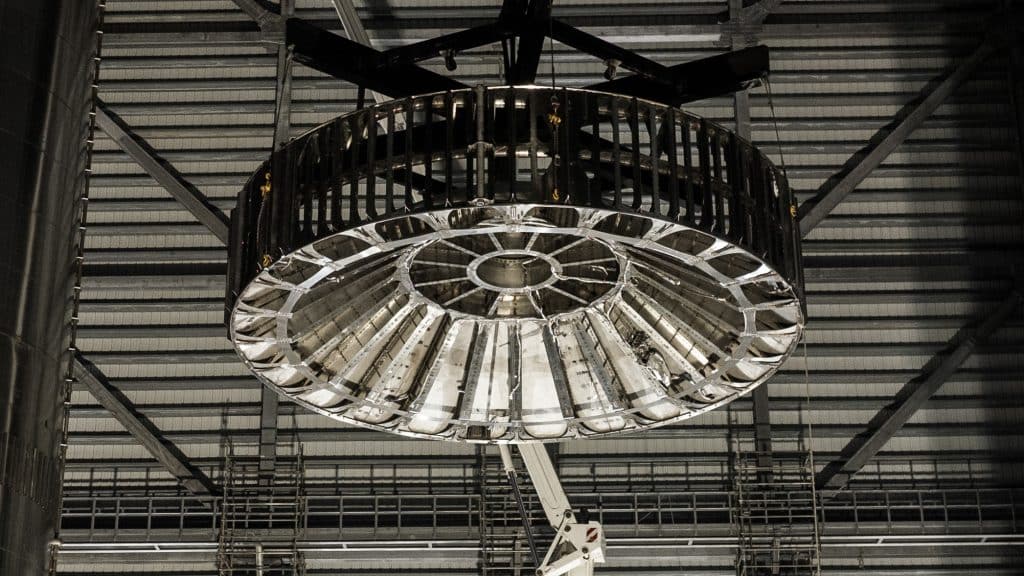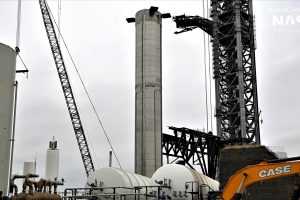Key Points
- 🚀 SpaceX installs a new hot staging ring atop Booster 9 for Starship’s stage separation method.
- 🛰 Hot staging involves Starship igniting its engines while still connected to Booster 9, which then separates.
- 🌍 The concept of hot staging is not new and has been used by Russian and older American rockets.
- 🔥 The hot staging ring is reinforced underneath to withstand Raptor engine forces during separation.
- 🚀 SpaceX hasn’t confirmed which Raptor engines will ignite first, but outer vacuum Raptors might start before center engines.
- 🏗 The quick disconnect arm for Starship’s fueling has been adjusted due to the hot stage ring addition.
- 🎥 SpaceX shares a video of a Raptor engine firing at a 15-degree gimbal angle for landing simulation.
- 🏭 SpaceX is making changes at its production site, demolishing tents and windbreak for improved facilities.
SpaceX has recently completed the installation of a new hot staging ring atop Booster 9, which is poised to undergo this innovative stage separation method.
The hot staging ring underwent a rigorous testing campaign, including integration with the “can crusher,” a device designed to mimic the stresses experienced by the rocket during liftoff. Following the successful passage of this test, the ring was positioned atop the booster.
Hot staging, a procedure where the second stage (Starship in this instance) ignites its engines while still connected, allows it to break away from the booster (Booster 9) which continues firing its own engines albeit at a throttled rate. This method has been employed by Russian rockets for years and older American rockets such as the Titan II.
The hot staging ring primarily comprises vents on its sides and a stainless steel dome. Its underbelly is significantly reinforced to withstand the forces exerted by the Raptor engines during the hot staging phase.

Although SpaceX has yet to confirm the sequence of ignition for the Starship Raptor engines, it’s possible that the outer three vacuum Raptors ignite first, followed shortly after by the three center engines due to the proximity of the sea level (3 center) Raptor engines to the top of the dome.
At the launch site, the Starship’s quick disconnect arm, responsible for fueling the vehicle, has been adjusted and elevated to accommodate the addition of the hot stage ring.
Regardless of the ignition sequence chosen, witnessing the rocket enter the staging phase promises to be an extraordinary sight. SpaceX also shared a video from their McGregor Test Facility showcasing a Raptor engine firing while undergoing a 15-degree gimbal maneuver, simulating the landing burn at “max gimbal deflection,” as explained by Elon Musk.
At the production site, one of the production tents was recently dismantled, and the mid-bay is being taken down to make way for an upgraded production facility. This follows the demolition of the windbreak that had stood since the early days of Starbase.
Booster 9 is anticipated to return to the Orbital Launch Mount within this week. However, the onset of tropical weather conditions might necessitate SpaceX to delay its positioning until the storm trajectory becomes clearer.





